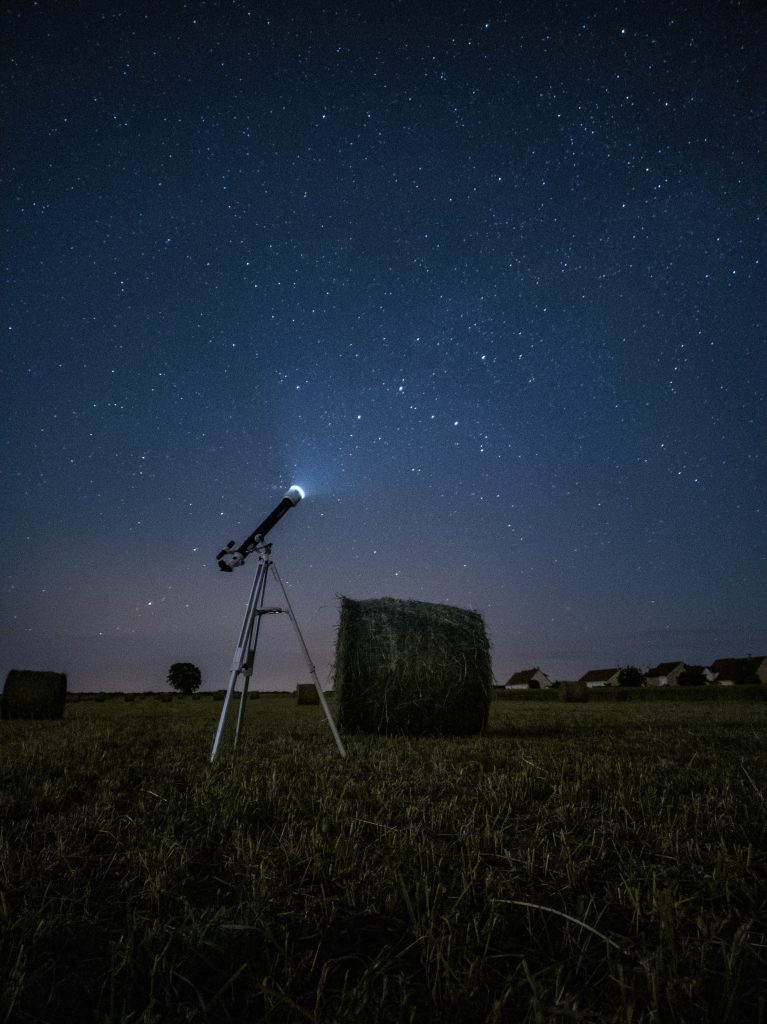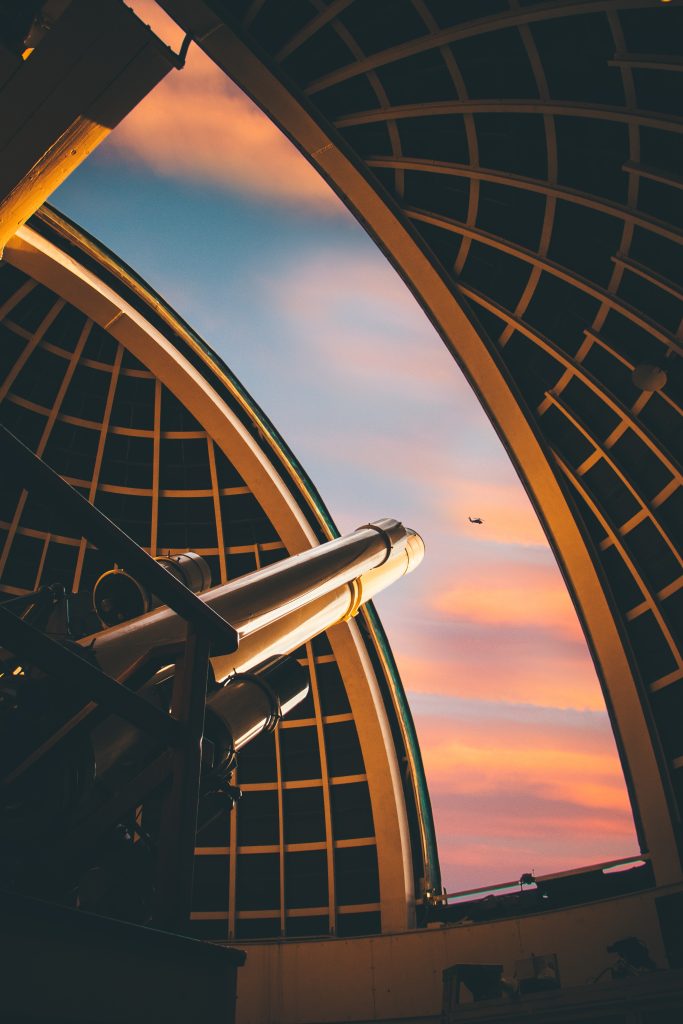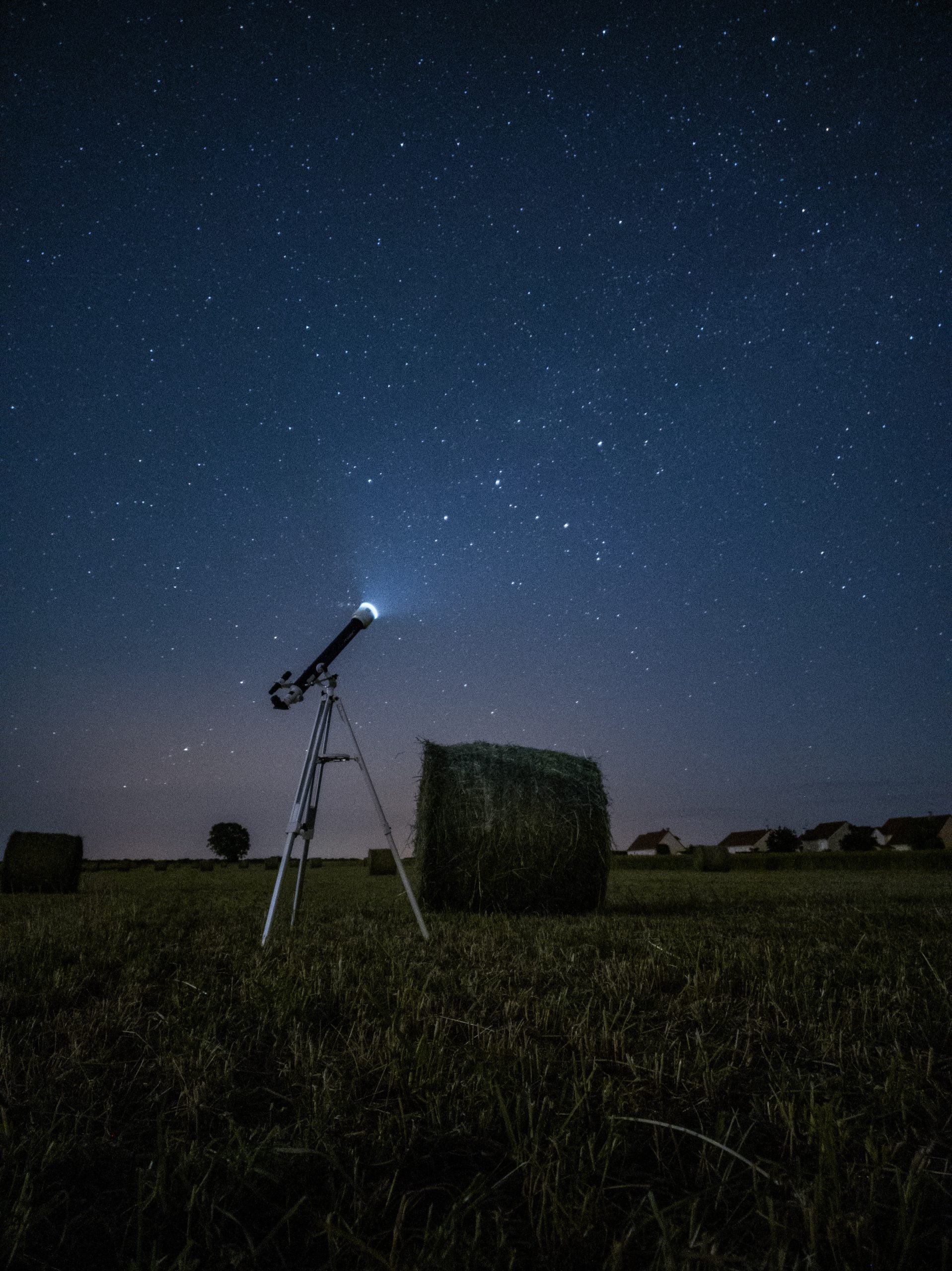Sure thing! Interested in observing the phases of Venus with a telescope? You’re in the right place! Let’s talk about how you can do just that.
To start, ensure that you have a good quality telescope with a decent magnification power. Once you’re set with the right equipment, choose a clear night sky to begin your observation. Now, locate Venus in the sky, which is usually visible soon after sunset or before sunrise. Adjust your telescope’s focus and try using a higher magnification to get a clearer view. Slowly scan Venus and you’ll notice that it appears as a small disk. As you keep observing over several nights or weeks, you’ll start to see the phases of Venus changing. From crescent to half, then gibbous, and eventually reaching a full phase. This is an exciting moment, as you witness the same phases that Galileo himself observed centuries ago. So, grab your telescope and enjoy the mesmerizing journey of observing the ever-changing phases of Venus!
Preparation
Choosing the right telescope
When it comes to observing the phases of Venus with a telescope, it is important to choose the right one. A telescope with a good aperture and magnification is recommended for a clear and detailed view of Venus. Refractor or reflector telescopes are popular choices for observing planets like Venus, as they offer high-quality images. Consider the size and weight of the telescope as well, especially if you plan to transport it to different locations.
Understanding the phases of Venus
Before you start observing Venus, it’s essential to have a basic understanding of its phases. Venus goes through a series of phases similar to our moon, as it orbits the Sun. The phases range from New Venus (completely dark), to Crescent Venus (a thin sliver visible), to Half Venus (half of the planet illuminated), and more. Understanding these phases will help you identify and appreciate the changes in Venus’s appearance throughout its orbit.
Gathering the necessary equipment
To observe the phases of Venus, you will need some specific equipment. Apart from the telescope itself, you will require additional tools such as a finder scope, eyepieces of different magnifications, a solar filter (for daytime observations), and color filters (for enhancing details). It’s important to gather all the necessary equipment before you begin your observations to ensure a smooth and enjoyable experience.
Finding Venus
Knowing when and where to look
To locate Venus in the night sky, you need to be aware of its position and timing. Venus is often referred to as the “evening star” or “morning star” due to its visibility during dawn and dusk. Using a comprehensive astronomical calendar or a planetarium software can help you determine the best times and locations to observe Venus. Keep in mind that Venus’s position changes throughout the year, so it’s essential to stay updated with its current whereabouts.
Using star maps and planetarium software
Star maps and planetarium software can be valuable tools for finding Venus. They provide visual representations of the night sky, including the positions of stars, planets, and other celestial objects. By inputting your location and desired date and time, these resources can show you exactly where Venus will be in the sky relative to other stars and constellations. Take advantage of these tools to make your search for Venus easier and more efficient.
Using the telescope’s finder scope
Once you have a general idea of where Venus is located, it’s time to use the telescope’s finder scope to locate it precisely. The finder scope is a small, low-magnification telescope attached to the main telescope, aiding in locating objects in the sky. Align the finder scope with a bright star or landmark near Venus’s expected position, and use the finder scope’s crosshairs to guide your main telescope to Venus. This step helps center Venus in your telescope’s field of view and ensures you don’t miss out on capturing its phases.

Observing Venus in the Daytime
Using a solar filter
Observing Venus during the daytime requires special precautions to protect your eyes and equipment. A solar filter is necessary to safely view the Sun and its surrounding celestial objects. Before attempting to observe Venus during the day, make sure you have a high-quality solar filter that is specifically designed for telescopes. This filter will block most of the Sun’s intense light, allowing you to view Venus without damaging your eyes or the telescope’s optics.
Pointing the telescope towards Venus
With the solar filter securely in place, carefully point your telescope towards Venus. Since Venus can be quite bright during the day, it may be challenging to locate at first. Utilize your knowledge of Venus’s position and the telescope’s finder scope to guide you. Make small adjustments until you spot Venus in your telescope’s field of view. Take your time and be patient, as finding Venus during the day can require a bit of practice.
Adjusting the focus and magnification
Once you have Venus in your telescope’s view, it’s time to fine-tune the focus and magnification for a clearer image. Venus is a relatively nearby planet, so adjusting the focus should not be too difficult. Use the telescope’s focus knob to bring Venus into sharp focus, ensuring you can see any details or changes in its phase. Experiment with different magnifications using different eyepieces to observe Venus at varying levels of detail and size.
Observing Venus at Night
Choosing the ideal time and location
Observing Venus at night requires some planning ahead. Choose a night when the sky is clear and free from heavy light pollution. Light pollution can reduce your visibility and make it difficult to observe Venus and its phases. Ideally, find a location away from city lights, such as a dark sky site or a rooftop with minimal obstructions. Additionally, check the local weather forecast to ensure optimal viewing conditions.
Using a low magnification eyepiece
When observing Venus at night, using a low magnification eyepiece is recommended. Venus appears as a bright and relatively large object in the night sky, so using a high magnification eyepiece can make it difficult to observe the planet as a whole. A low magnification eyepiece will provide a wider field of view, allowing you to appreciate Venus in its entirety and better observe its changing phases.
Tracking Venus’s position
As you observe Venus at night, you will notice that it appears to move slowly across the sky. Tracking Venus’s position through your telescope is essential to keep the planet within your field of view. Use the slow-motion controls on your telescope if available, or make slight adjustments to the telescope’s position as Venus moves. By continuously tracking Venus’s position, you can observe its changing phases over time.

Recording Observations
Keeping a written log
Keeping a written log of your observations can be a valuable practice for any astronomer. Record the date, time, and location of your observations, as well as any notable observations, changes in Venus’s phase, and any other relevant details. Maintaining a written log allows you to track Venus’s progression through its phases and document any patterns or interesting phenomena you observe over time.
Sketching the observations
Sketching your observations can enhance your understanding and appreciation of Venus’s phases. Even if you are not an artist, simple sketches can help document the features and changes you observe. Note any notable markings on Venus’s surface, such as dark patches or light spots. Additionally, try to capture the overall shape and size of Venus during different phases. These sketches can serve as a visual reference for future observations and comparisons.
Using a digital camera or smartphone
If you prefer a more modern approach to recording your observations, consider using a digital camera or smartphone. Attach the camera or smartphone to your telescope using a compatible adapter or mount and capture images or videos of Venus. This method allows you to document the various phases of Venus in a more detailed and shareable format. Keep in mind that capturing clear images of Venus can be challenging, so practice and patience may be required.
Advanced Techniques
Using color filters to enhance details
To further enhance your observations of Venus, try using color filters. Color filters can highlight certain features or details on the planet’s surface, making them more visible. Filters in colors like red, blue, and green can bring out different aspects of Venus’s atmosphere and enhance the contrast of its phases. Experiment with different filters to see which ones provide the best results and reveal unique characteristics of Venus.
Measuring the brightness of Venus
Measuring the brightness of Venus during each phase can provide valuable data for scientific purposes. As Venus goes through its phases, it experiences changes in the amount of sunlight reflected off its atmosphere and surface. Using a photometer or specialized software, you can measure Venus’s brightness and track how it varies over time. Contributing your measurements to scientific organizations or amateur astronomer communities can help in studying Venus’s atmospheric properties and gathering data about its reflective characteristics.
Photographing Venus
Photographing Venus can be challenging due to its brightness and the need for specific equipment. To capture detailed images, it is advisable to use a camera capable of long-exposure photography and connect it directly to your telescope. Additionally, using a camera tracking mount can help counteract the Earth’s rotation and keep Venus centered in your frame during long exposure times. Practice and experimentation are crucial for successful Venus photography, so don’t be discouraged if you don’t achieve satisfactory results immediately.

Understanding the Phases
New Venus
The New Venus phase occurs when the planet appears as a dark silhouette against the Sun, similar to a new moon. During this phase, Venus is on the opposite side of the Sun from Earth, with the Sun’s light illuminating the side facing away from us. While observing the New Venus phase is challenging due to the planet being near the Sun in the sky, it can still be an intriguing and rare sight to witness.
Crescent Venus
As Venus moves further from its New Venus phase, it starts to exhibit a crescent shape, much like a crescent moon. This occurs as sunlight gradually illuminates a portion of the planet’s surface visible from Earth. Observing Crescent Venus allows you to witness the gradual illumination and changing shape of Venus, providing a fascinating opportunity to observe the phenomenon of planetary phases in action.
Half Venus
The Half Venus phase is when exactly half of the planet is illuminated by the Sun, resulting in a beautiful half-moon-like appearance. During this phase, Venus is approximately halfway between its New Venus and Full Venus phases. The Half Venus phase offers a symmetrical and striking view of the planet, allowing you to appreciate its unique characteristics and atmospheric features.
Gaining Insight into Venus’s Atmosphere
Observing the thick atmosphere
One of the most significant features of Venus is its thick and cloudy atmosphere, which can be observed even with a modest telescope. As you observe Venus, pay close attention to the appearance and behavior of its atmospheric features. Note any visible cloud patterns, atmospheric layers, or color variations. Observing the dynamics of Venus’s dense atmosphere can provide valuable insights into its weather systems and atmospheric phenomena.
Detecting clouds and weather patterns
Venus’s cloudy atmosphere offers opportunities to detect cloud patterns and weather phenomena. Changes in cloud formations and their movement across Venus’s surface can reveal the planet’s atmospheric dynamics. By tracking cloud patterns and noting weather changes over time, you can gain a deeper understanding of the atmospheric processes occurring on Venus.
Understanding the greenhouse effect on Venus
Venus is known for its extreme greenhouse effect, which has resulted in a scorching hot surface temperature. By studying Venus’s atmosphere and the greenhouse effect at work, astronomers can gain valuable insights into our own planet’s climate and atmospheric conditions. Observing Venus’s phases and its atmospheric properties can contribute to the ongoing research and understanding of the greenhouse effect and its impact on planetary environments.
Historical Discoveries
Galileo’s observations of Venus
Galileo Galilei, the famous Italian astronomer, was among the first to observe Venus through a telescope in the early 17th century. Through his observations, Galileo was able to confirm the existence of Venus’s phases and provide evidence for the heliocentric model of the solar system. Galileo’s work and observations laid the foundation for our understanding of the phases of Venus and paved the way for further astronomical discoveries.
Transits of Venus
Transits of Venus occur when Venus passes directly between the Sun and Earth, appearing as a small dot moving across the Sun’s disk. These rare events offer unique opportunities for scientists to study Venus’s atmosphere and gather data about its size and orbital properties. Historical transits of Venus played a crucial role in determining the scale of the solar system and refining our knowledge of Venus’s orbit.
Contributions of early astronomers
In addition to Galileo, many early astronomers made significant contributions to our understanding of Venus and its phases. Astronomers such as Johannes Kepler, Pierre Gassendi, and Jeremiah Horrocks conducted meticulous observations and calculations to unravel the mysteries of Venus’s phases. Their work laid the groundwork for future generations of astronomers and provided valuable data that continues to be studied today.
Joining Astronomy Communities
Participating in online forums
Joining online forums dedicated to astronomy is a fantastic way to connect with fellow enthusiasts and share your observations of Venus. These communities offer a platform to ask questions, seek advice, and share your experiences. Engaging in discussions about Venus and its phases can deepen your knowledge and foster a sense of camaraderie among fellow stargazers.
Joining local astronomy clubs
If you’re interested in further exploring the world of astronomy, consider joining a local astronomy club. These clubs often organize stargazing events, lectures, and workshops where you can learn more about observing Venus and other celestial objects. By joining such a club, you can meet like-minded individuals, gain access to advanced equipment, and expand your knowledge through the expertise of experienced astronomers.
Attending star parties
Star parties are gatherings of amateur astronomers and astronomy enthusiasts who come together to observe and celebrate celestial events. These events provide a unique opportunity to learn from experienced observers, exchange tips and techniques, and gain a deeper appreciation for the wonders of the night sky. Attend a star party in your area to connect with fellow enthusiasts, witness stunning observations of Venus, and immerse yourself in the joy of exploring the cosmos.
As you embark on your journey to observe the phases of Venus with a telescope, remember that practice and patience are key. Each observation will allow you to uncover new details and appreciate the beauty and complexity of our neighboring planet. Whether observing Venus during the day or at night, recording your observations, or delving into the historical discoveries surrounding this intriguing planet, the world of Venus observation awaits you. Enjoy the process, and may your time under the stars be filled with wonder and discovery!











